Exploring Southern Oregon: Fine-Dining at Mas
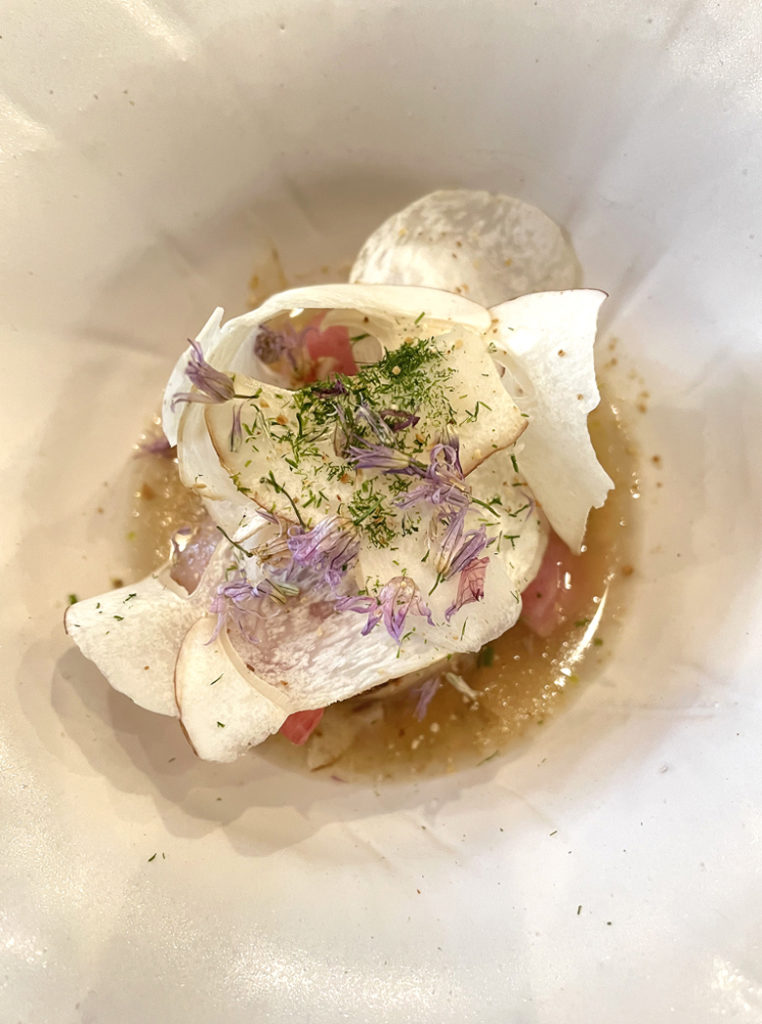
Ashland, OR. — Tucked away in a secluded alley off the main downtown drag, Mas is not a place that one just happens to stumble upon.
But seek it out, you definitely should.
Named one of the New York Times’ “favorite 50 restaurants” in 2022 and a semi-finalist for “Best Chef Northwest and Pacific” in 2023, this $195 per person, tasting menu-only restaurant is all of 16 seats.
The best seats, of course, are at the chef’s counter, where I dined earlier this month as a guest of Travel Oregon. It’s where you can watch Chef Josh Dorcak and his small staff prepare each course with precision.
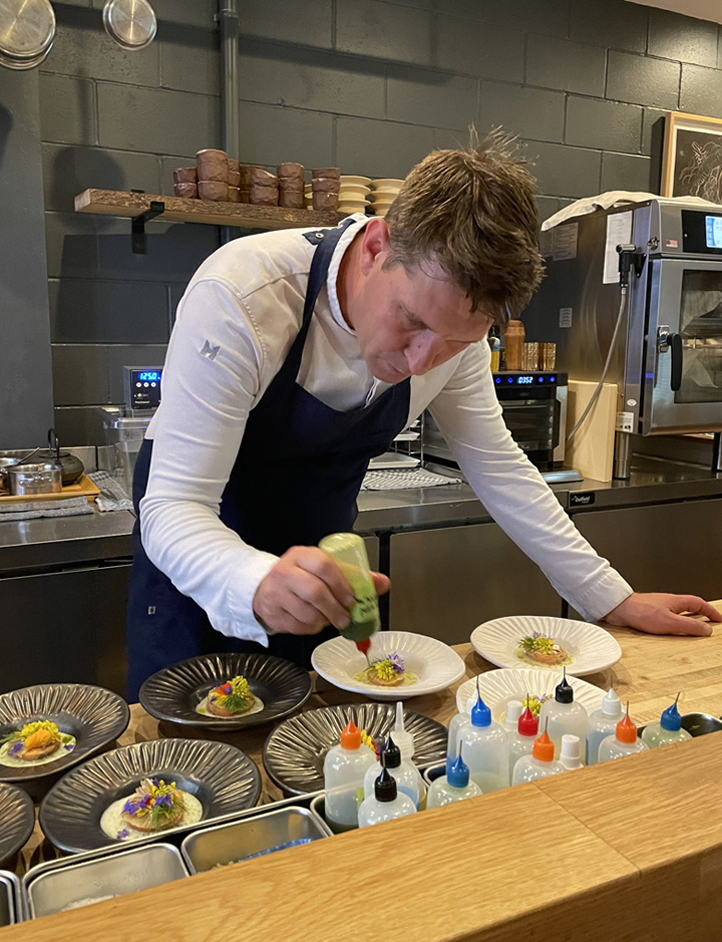
It’s rather astonishing to realize that the galley kitchen behind the counter, about the size of one in a modest home, is all they use, too. There’s all of one or two induction burners, a combi oven that can cook with steam or hot air, and a fish aging refrigerator off to the side. That’s pretty much it.
Dorcak describes his menu as “Cascadian cuisine” for its hyper seasonality and locality. It’s certainly by way of Japan for all the Japanese ingredients and techniques used. In fact, a trip to Japan was what inspired his vision for the restaurant in the first place.
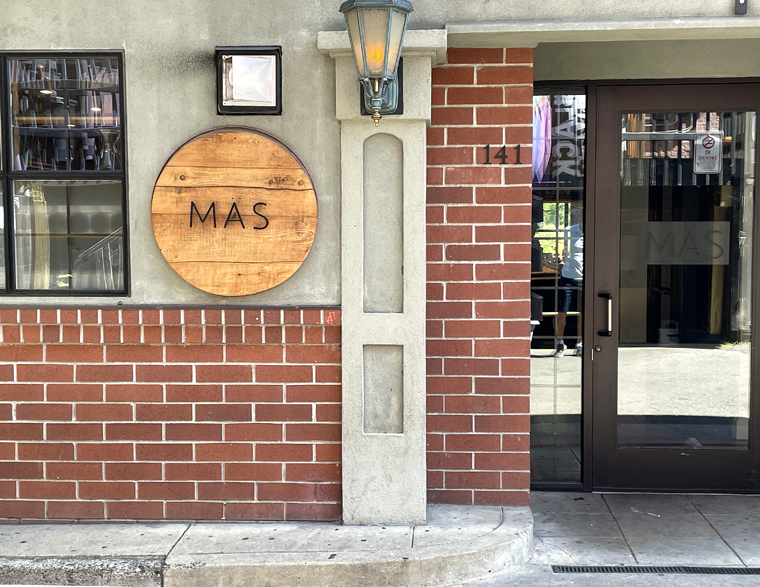
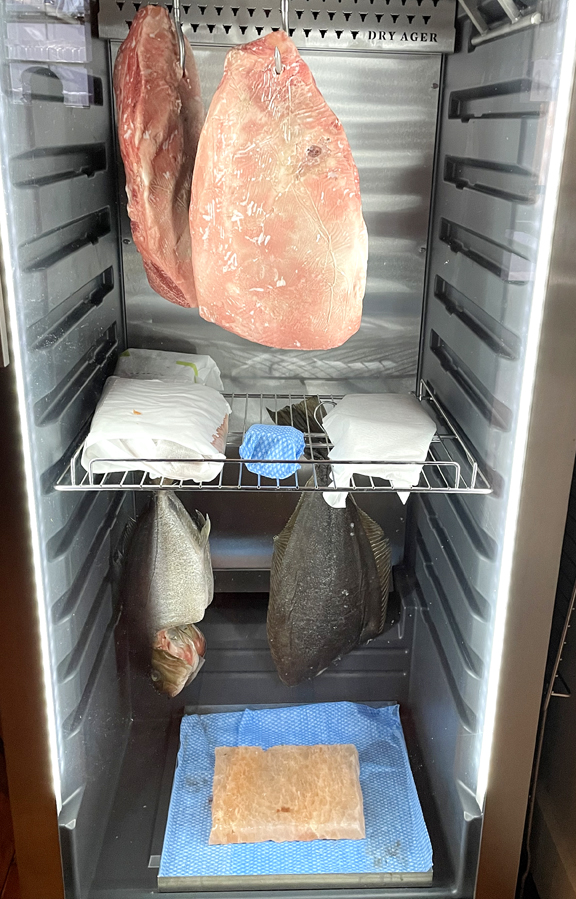
Growing up in Cupertino, CA, he loved watching the original “Iron Chef” on TV and eating with family and friends at local Japanese restaurants. After attending the California Culinary Academy in San Francisco, he moved to Ashland to work at the now-shuttered Amuse restaurant. A trip to Tokyo opened his eyes to the idea of nano restaurants, thimble-sized establishments run by just one or two chefs.
When he returned to Ashland, he began his quest to to create his own by first starting Mas as a pop-up in the basement of the very fine Mix bakery downtown. Eventually, he took over a former hair salon for his permanent location. In 2021, he added to that by opening the a la carte Nama next-door.
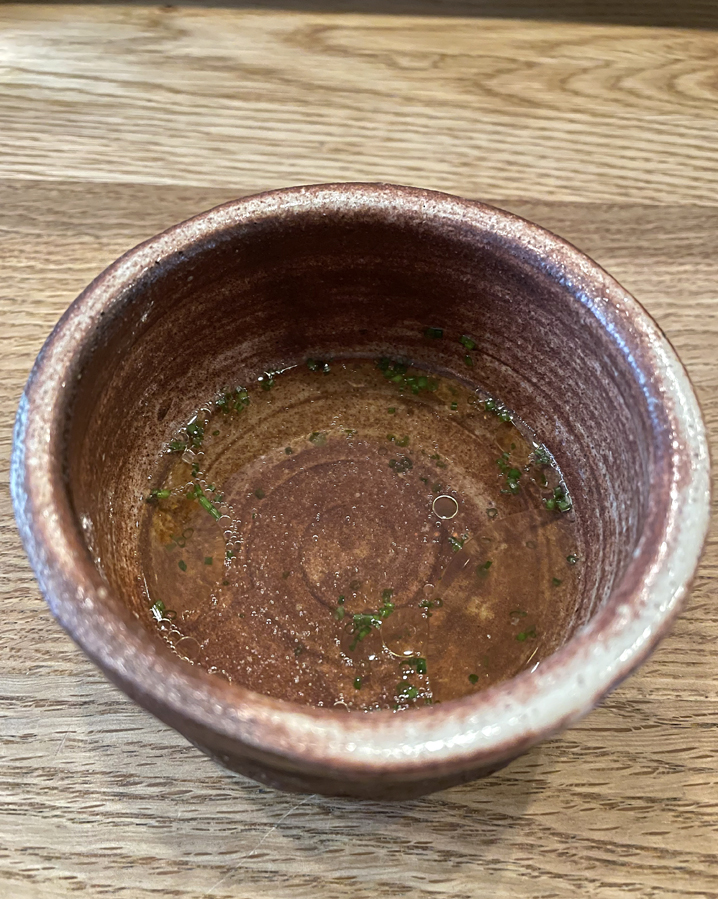
Of course, you can ask him all this yourself, if you’re perched at the counter, as he works in front of you alongside Chef de Cuisine Evan Bolling, and one or two other cooks.
Mas is an intimate experience that begins, as it always does, with a warm, welcoming earthenware cup of grilled kombu and katsuobushi dashi made with a little clarified butter to add a thin veil of richness to this light, umami broth.
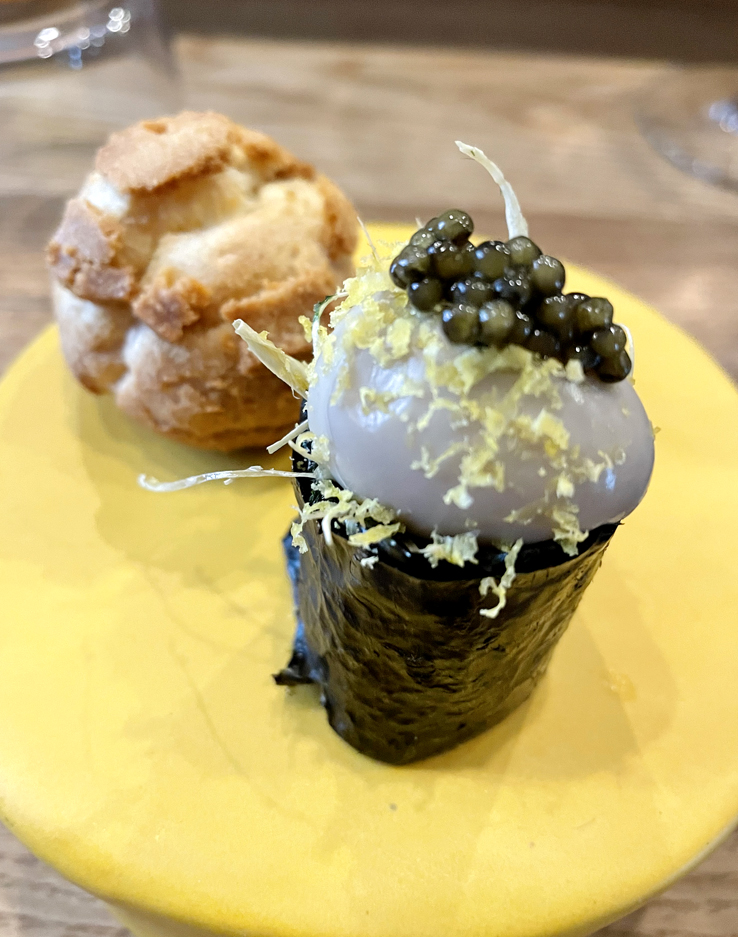
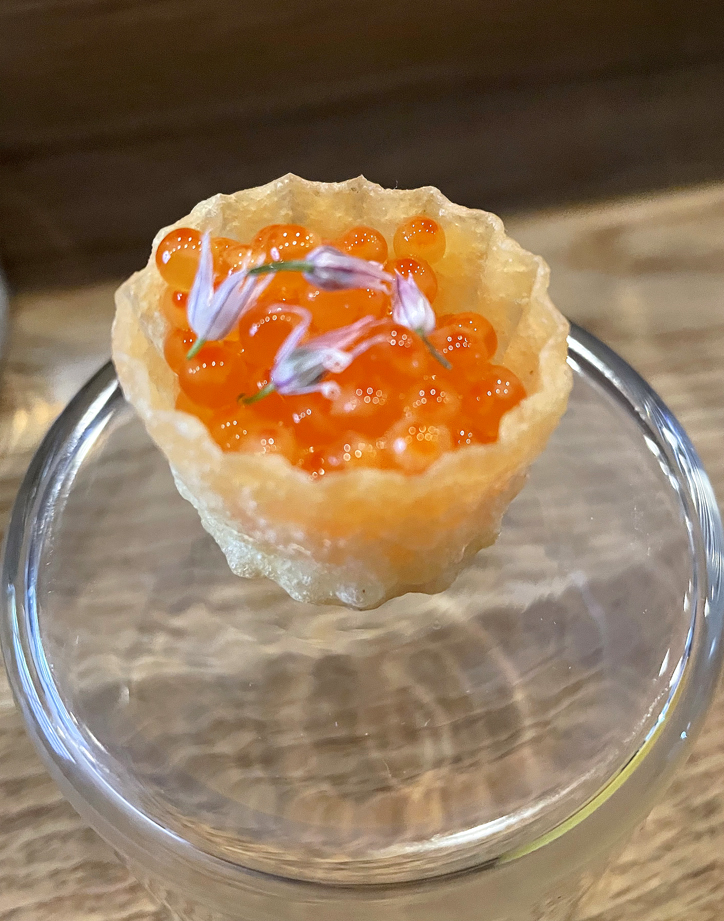
Next come a series of snacks served all at once: toasty nori brioche crowned with a quail egg and caviar; a tiny, airy cream puff filled with luxurious yet light foie gras mousse; the thinnest, most fragile croustade filled with yuzu creme fraiche and trout roe; and a creamy oyster emulsion with black garlic and Kaluga caviar.
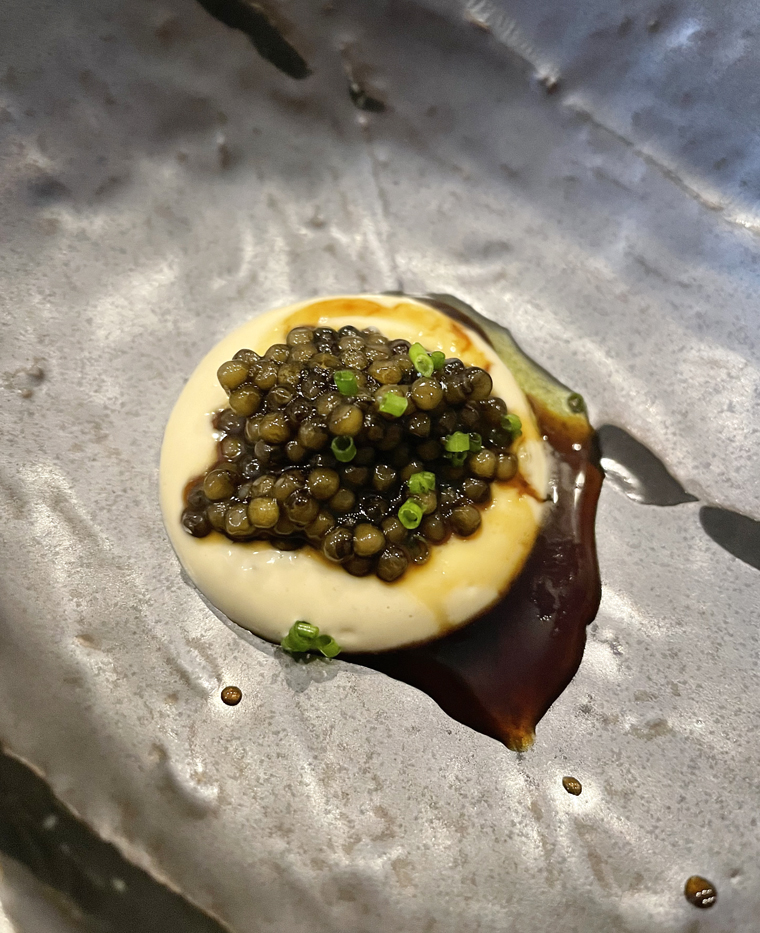
They set the tone for the rest to come — a series of jewel-like dishes that don’t scream or shout with aggressiveness but rather disarm with a lightness and cleanness coupled with an elegant depth that draws pointedly from the sweet salinity of the sea.
Northern Californian halibut is dry-aged for four days, then cured with kombu, rendering its flesh opaque and imparting a subtle kelp taste. It’s adorned with a Douglas fir kombucha sauce, slivers of dashi turned into gel for bursts of salty umami, and a touch of Meyer lemon Japanese chili paste. The most perfect spring peas and pretty petals complete this dish that tastes of the ocean if it were seasoned with citrus.
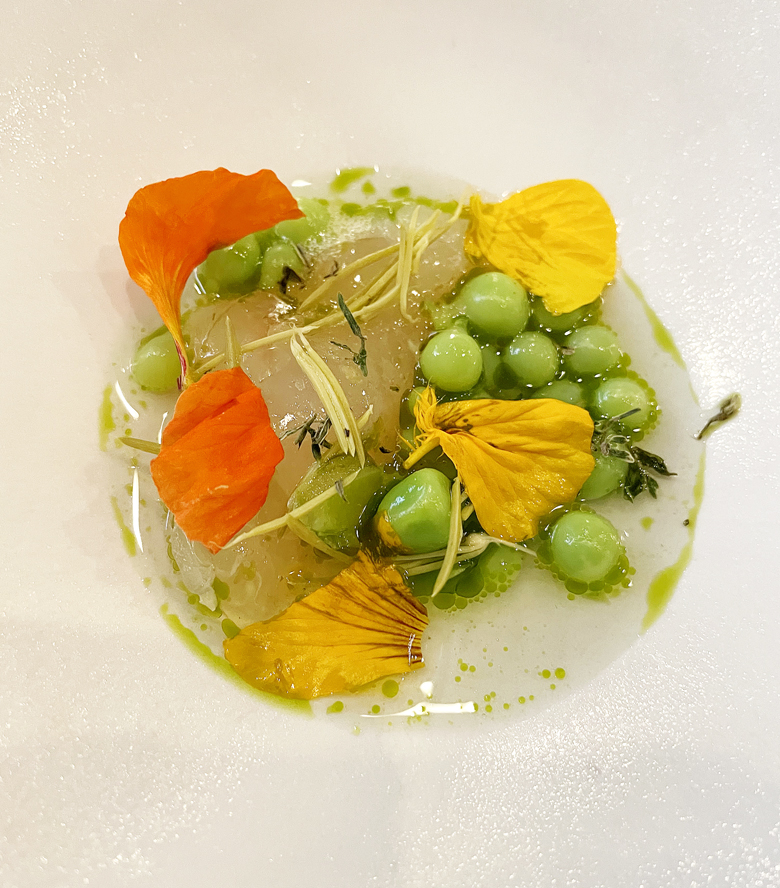
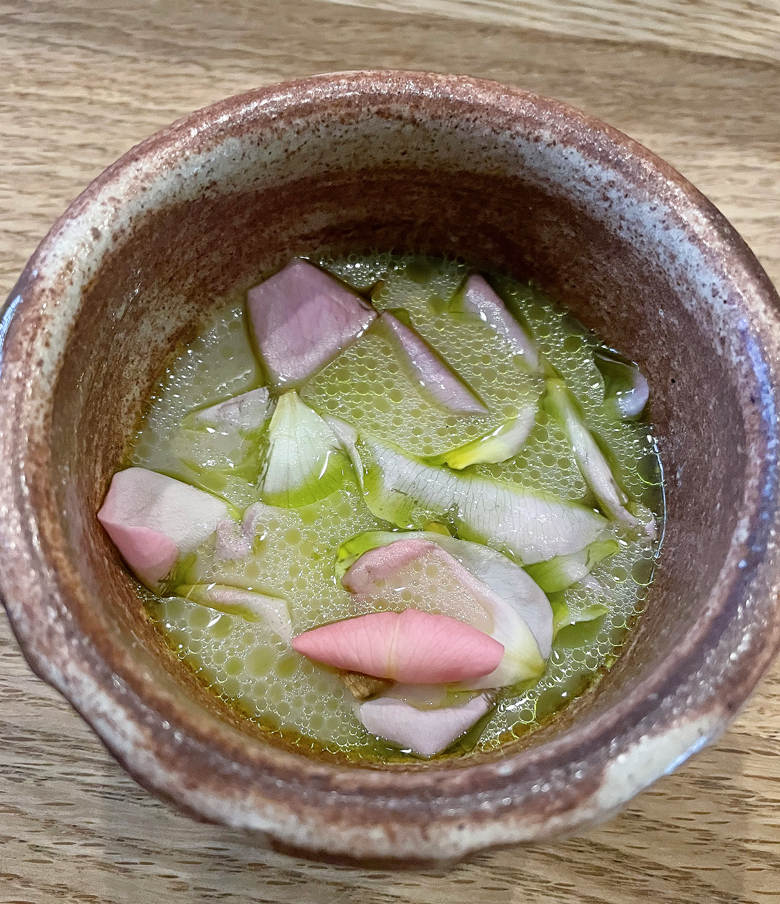
Flowers also decorate the next dish, this time pink rose petals with razor clams that get a touch of chili on the finish.
The Tidal Pool dish marries Coos Bay oysters with nuggets of sake-braised abalone and Fort Bragg uni. The genius touches of tempura crunchies and crisp, juicy ice plants add a textural pop like croutons on a salad.
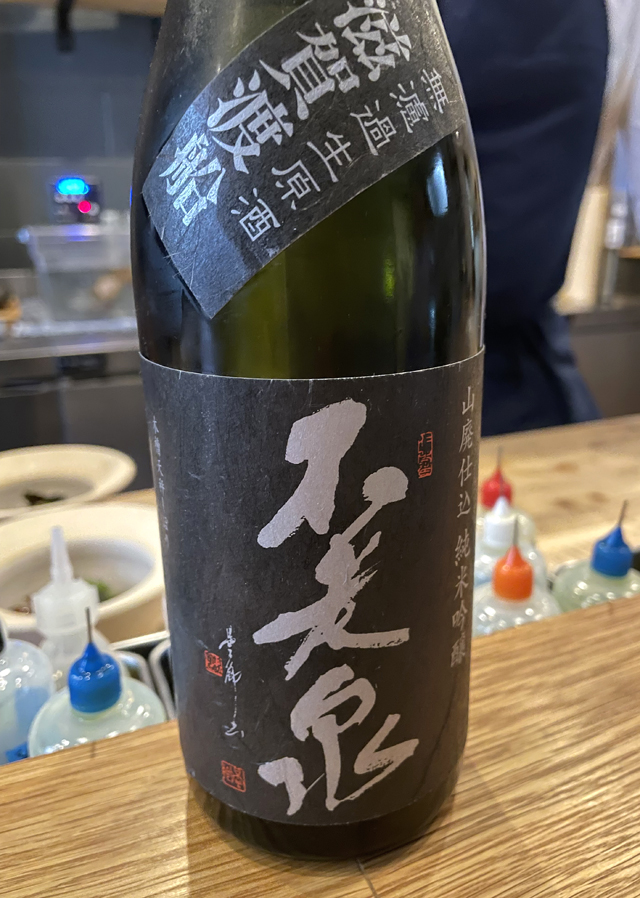
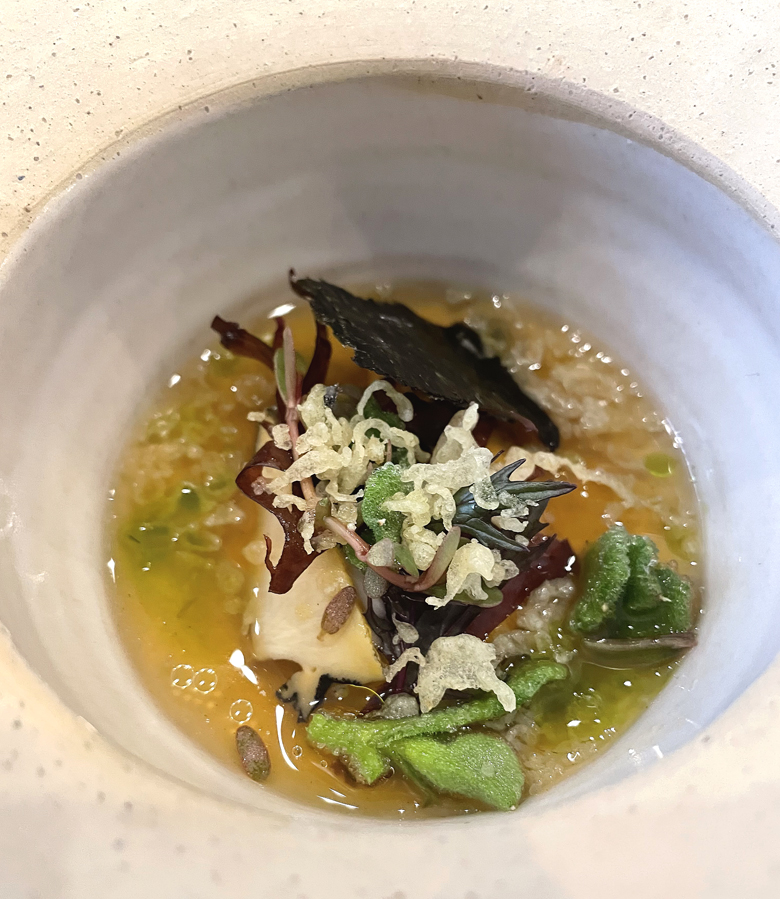
North Carolina trout also gets the aging treatment to concentrate its flavor and give it a slightly denser yet supple texture. It’s dry-aged for seven days, then cured in cherry blossoms, before being poached and served with garbanzo miso. It arrives in a pool of creme fraiche that’s been touched by a blazing hot Japanese binchotan charcoal to impart smokiness. The taste is of milky sweetness with a balanced tang.
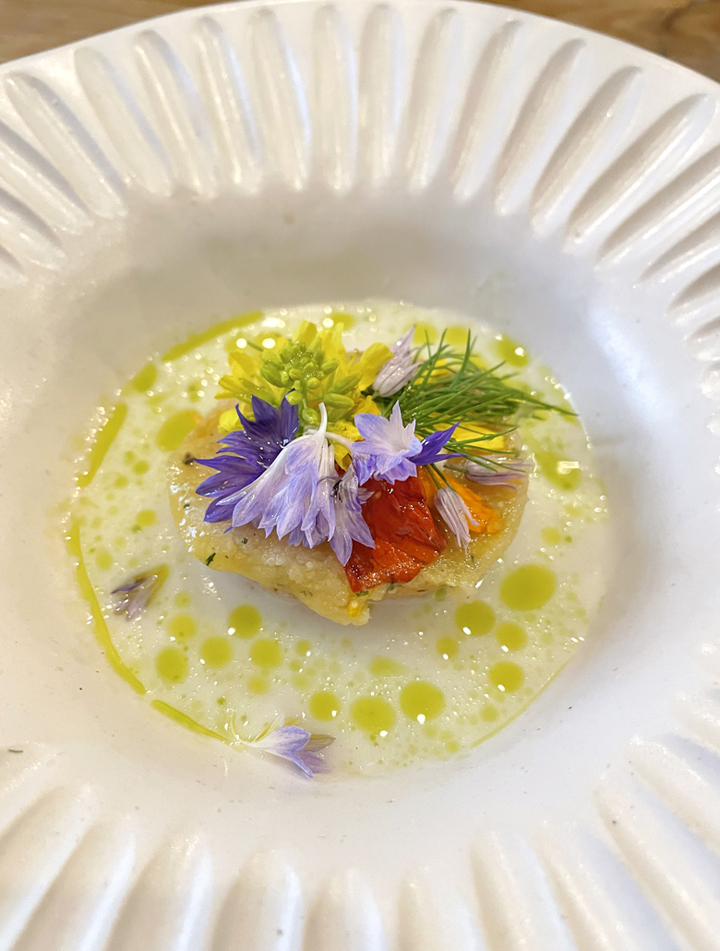
Next, my favorite dish of the evening: poached otoro or medium fatty tuna belly served with morsels of foie gras that have been cured in miso, all finished with a room-temperature sauce of aged ham and Wagyu vinegar. Raw porcini are shaved overtop, giving the whole dish the look of a contemporary porcelain piece. It’s a dish that could eat heavy, but it never does. The tuna and foie are buttery delicious, with the acidic zing of the vinegar resetting the palate nicely.
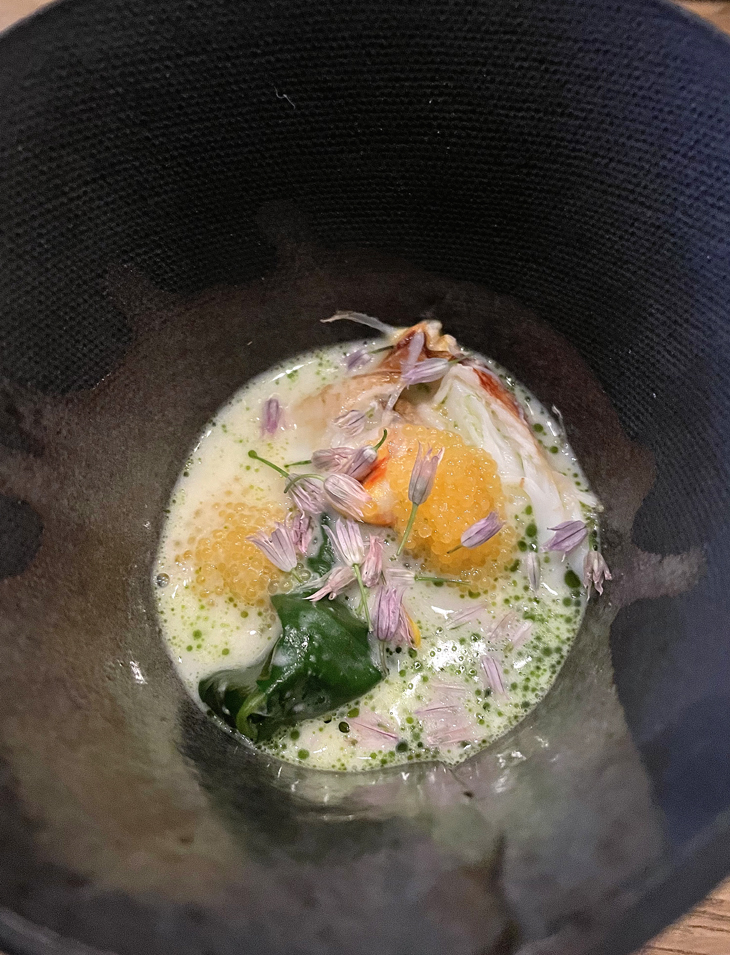
That’s followed by a take on chawanmushi, the jiggly savory egg custard. It’s milky and creamy tasting, reminiscent of seafood chowder, as it’s made with lobster stock, goat’s milk, and shio koji. Crab and tiny white fish roe dot the top with purple blossoms. It’s all steamed with a fig leaf that adds a haunting coconut-like flavor.
The last savory course is A5 Wagyu top sirloin cap that’s cooked sous vide, then seared. Since there’s only one induction burner, and it’s in use for something else, Bolling does the honors with a blowtorch, providing a show all unto itself.
The succulent, marbled beef gushes juiciness from the first bite. It’s served with morels, favas, bone marrow and a whisky ponzu sauce, along with mustard blossoms that add pops of pepperiness.
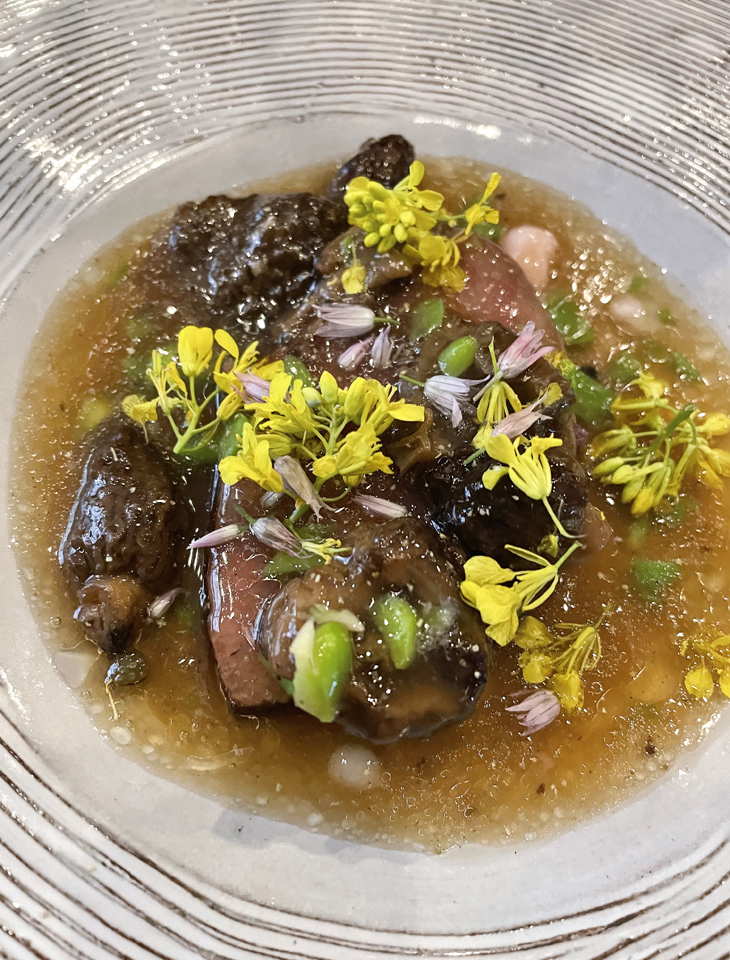
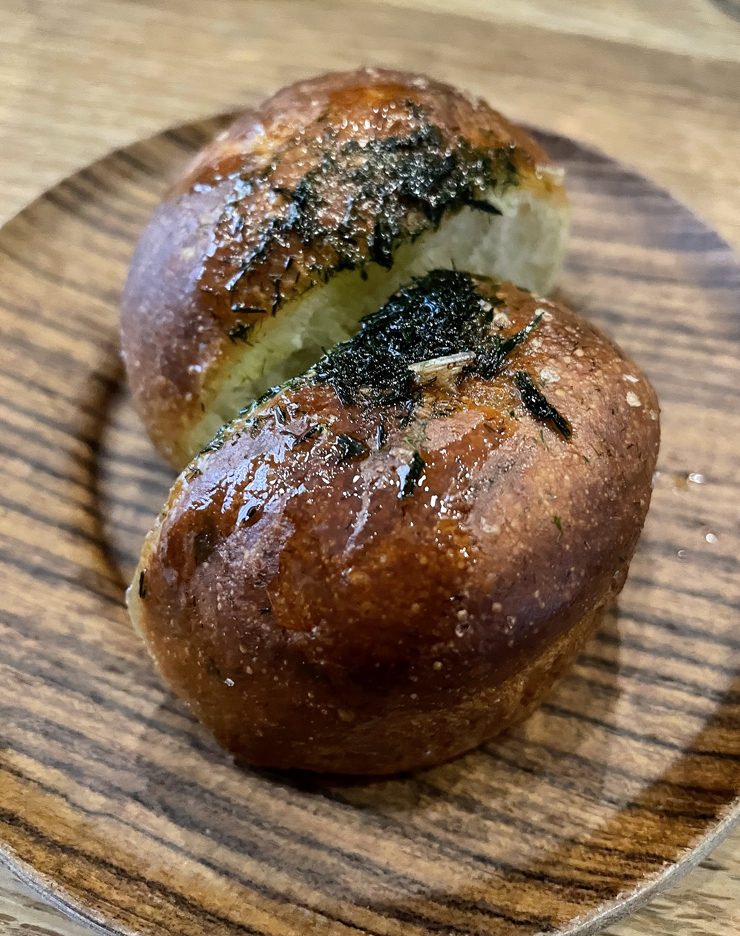
Alongside comes a house-baked koji butter roll that’s handy for dragging through the very meaty tasting sauce.
Dessert is simple — fig leaf ice cream tinged pale green in a raw goat’s milk foam that has a touch of funk to add savoriness. There are also bits of sake gelee and a toasted coconut crumble, lending tropical, floral notes.
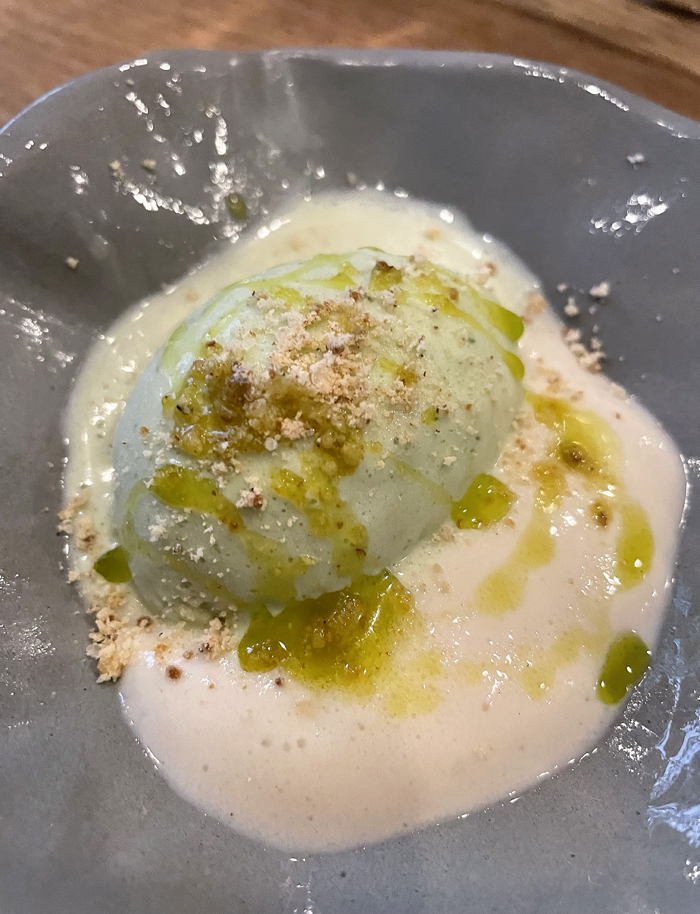
During dinner, Dorcak remarked how fortunate he feels that Ashland, with a population of only about 21,000, supports what he has endeavored to create here. I’d say that Ashland is equally quite lucky to have him.
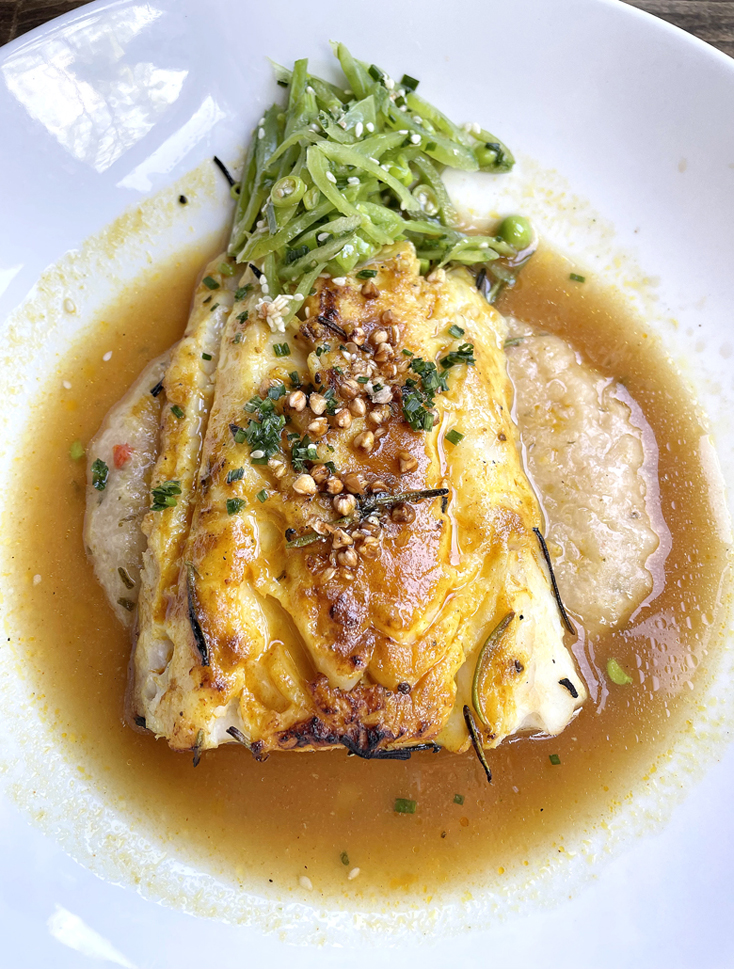
More: Exploring Southern Oregon: Alchemy Restaurant and The Winchester Inn
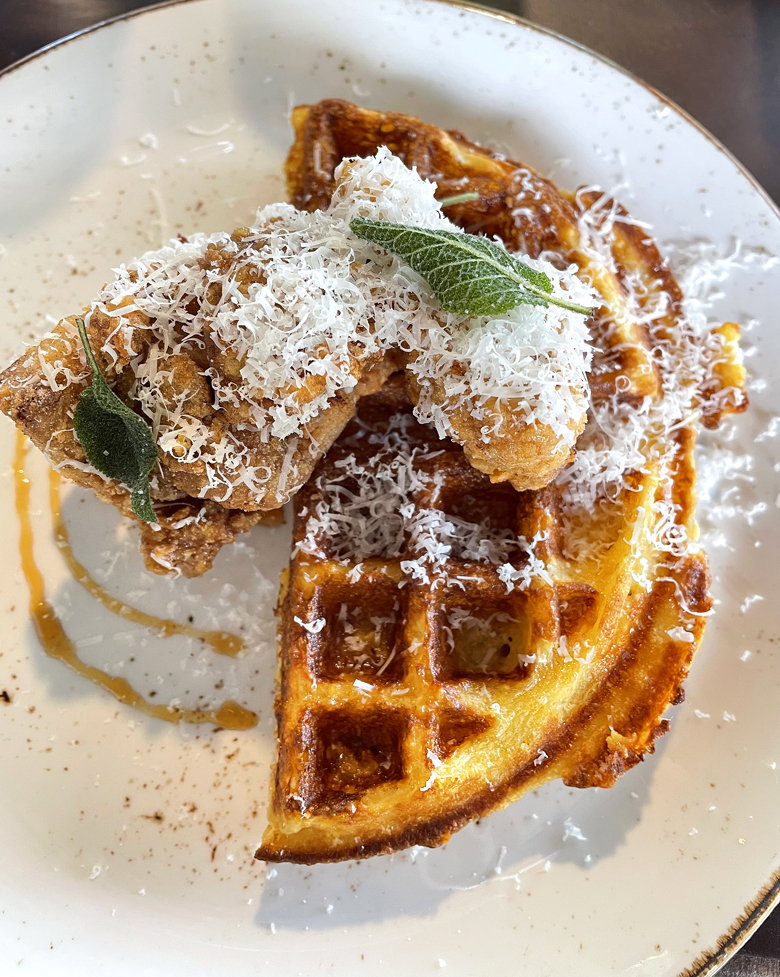
Plus More Oregon Travels: Abbey Road Farm
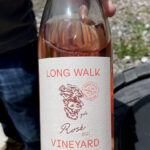
And: Exploring Southern Oregon: Long Walk Vineyards
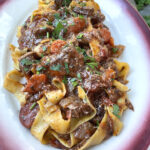
And: Exploring Southern Oregon: The Steamboat Inn


Pingback: Exploring Southern Oregon: Alchemy Restaurant and The Winchester Inn | Food Gal
Hello Carolyn,
We’ve eaten at Mas twice. We enjoyed the fresh ingredients and serene atmosphere.
Another one we like in Oregon is Okta in McMinnville!
Hi Kim: Thanks for the tip about Okta. I’ve heard many wonderful things about Chef Matthew Lightner’s cooking there. Hope to try it on my next trip to Oregon.